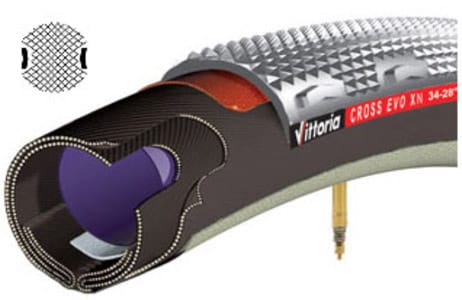Contact Surface Pressure refers to the pressure exerted between two surfaces in contact with one another. However, this simple term has many connotations. It could mean average, minimum, or maximum pressure. It could also refer to pressure distribution across the plane defined by the two contacting surfaces. Since all surfaces have variations in rigidity, roughness, compressibility, and flatness, surface contact pressure is seldom constant. Such pressure differences present serious implications to how parts interact in their respective environments.
Contact Surface Pressure in Tribology
Tribology is the science of the mechanisms of friction, lubrication, and wear of interacting surfaces that are in relative motion. Therefore, it should not be a surprise that surface contact pressure plays a major role in these surface interactions. Some example of this are subsequently discussed below.
Maintaining low surface contact pressure increases the life of screws. This can be achieved by increasing the screw and nut size, which will reduce thread contact pressure for the same working load.
In studies of the effects of friction on a smooth, rigid roller against a rough surface, the results show that the real area of contact is less than the corresponding smooth-surface ideal contact area. Furthermore, the magnitude of the actual localized maximum surface contact pressure is always greater than the corresponding smooth surface contact pressure.
In other studies reported in Tribology International, X Wang, et al, found that the texture on the contact surface of SiC improves the performance of lubrication. At the same time, it reduces the load supporting area and leads to an increase in the surface contact pressure. Another work, by GX Jiang and HS Cheng, concluded that surface contact pressure is important to the modeling of rough-surface contact in the presence of lubricants.
Other Disciplines Relying upon Contact Surface Pressure
A series of articles in medical literature state that the concept of pericardial surface contact pressure has important implications for normal pericardial physiology and the functional changes associated with diseases of the heart. Excessive surface contact pressure between the pericardium (the membranous sac filled with fluid that encloses the heart and the roots of the aorta and other large blood vessels) and the heart can be problematic.
Manufacturers of insulated fabrics that protect wearers from heat have also studied the effects of surface contact pressure on their products. They have learned that the resistance to transmission of injurious levels of heat decreases as the test temperature and contact pressure increase. Their experiments show how the temperature of the contacting surface, contact pressure, and fabric moisture content affect protective insulation in conductive tests.
Both the automotive and bicycle industries are concerned with the surface contact pressure of their tires. Hankook claims that its Ventus S1 Evo K 107 Tyre (see Figure 1) provides a balanced surface contact pressure and power transmission for precise handling at high speeds as well as optimized braking performance due to a stiff steel belt package in combination with a high-density, zero-degree, nylon belt. The Vittoria Cross Evo XN Tubular Tyre for bicycles (see Figure 2) can be operated at low inflation pressure to increase surface contact.
 Fig 1: Hankook Ventus S1 Evo K 107 Tyre |  Fig 2: Vittoria Cross Evo XN Tubular Tyre | Fig 3: Landpac HEIC Compactor |
Soil compaction equipment relies upon high compaction loads that lead to high surface contact pressure on the soil. Figure 3 shows the Landpac HEIC Compactor. This high surface contact pressure, coupled to the large contact area over which the compaction energy transfer takes place, leads to a vastly increased depth of influence of the compaction. Ground improvement is measured to effective depths of two to three meters with depths of up to 5 meters being recorded in some applications
Measuring Contact Surface Pressure
Two specialized methods can be used to measure and map surface contact pressure. The first involves the use of Fujifilm Prescale®, Pressure Indicating Sensor Film. The second method employs a technique called Tactilus®, Electronic Tactile Surface Pressure Mapping, which shows how pressure is exerted between two surfaces in real time.
Many of the studies previously discussed are highly theoretical. They rely upon complex models requiring finite element analysis (FEA) for solution. Fujifilm Prescale® has been used in many such studies to provide actual surface contact pressure data to verify the models.
Tactilus® can support the type of research proposed by Sripati Sah, in his master’s thesis at MIT. He investigated placing an array of force sensors, such as Tactilus®, into stamping tooling. He used the sensors to directly measure surface contact pressure as a means to predict and detect defects. The results of this work show the possibility of predicting corner failure defects in aluminum stampings.


